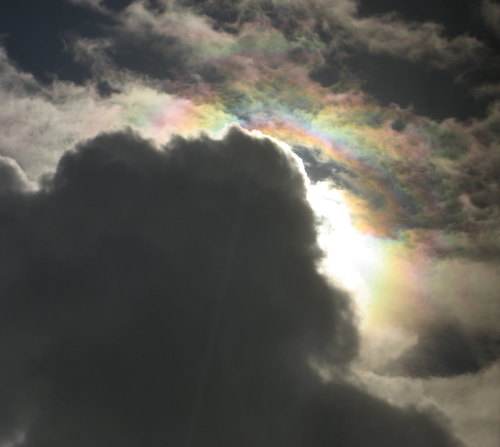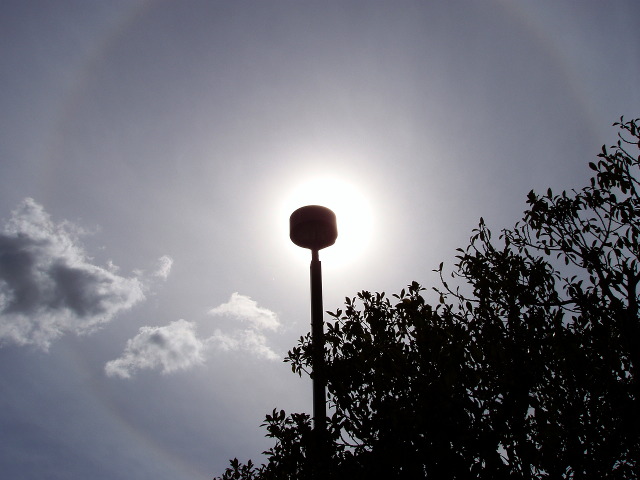
Spotted this on Thursday, between rain showers. It’s a slightly distorted corona, formed by diffraction of sunlight around cloud droplets, splitting the spectrum and producing rainbow-like colors. According to the Atmospheric Optics site, the distortion indicates that the droplet size varies across different parts of the cloud.
This was shot through a window, and I’m 99% certain that the straight line running down the middle of the darker foreground cloud is a reflection from inside the room.
